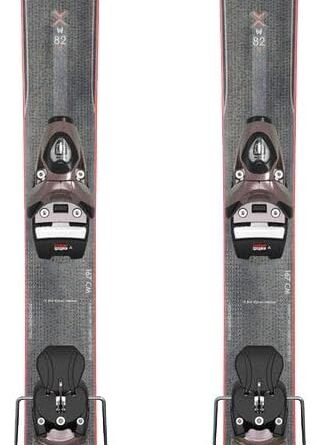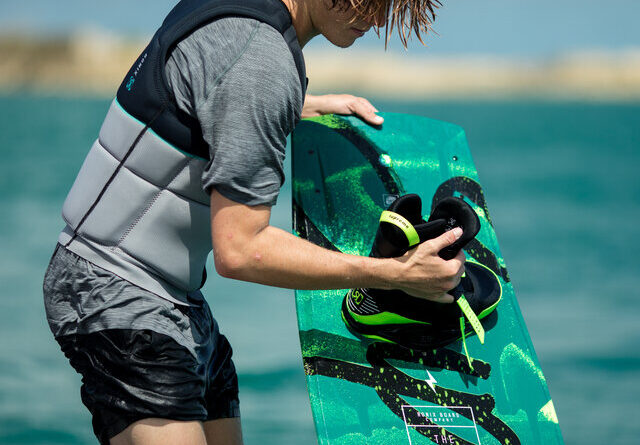
Looking to enhance your wakeboarding experience? Look no further! In this ultimate guide, you will discover everything you need to know about choosing the perfect wakeboard fins. From selecting the right size to determining the ideal style, we will help you navigate through the wide variety of options available in the market. Get ready to ride the waves like a pro with the perfect set of wakeboard fins tailored to your needs and preferences. Let’s dive in and make the most out of your wakeboarding adventures!

This image is property of blog.gritroutdoors.com.
Understanding Wakeboard Fins
What are wakeboard fins?
Wakeboard fins are small, fin-like structures that are attached to the bottom of wakeboards. These fins play a crucial role in the performance and maneuverability of wakeboards. They help the rider maintain stability, control, and direction while cutting through the water. Wakeboard fins act as the primary source of traction, enabling riders to execute tricks, turns, and jumps with ease. Without fins, wakeboarding would be a much more challenging and unpredictable experience.
Why are wakeboard fins important?
Wakeboard fins are essential because they provide stability and control on the water. They act as additional points of contact between the wakeboard and the water’s surface, helping to maintain balance and improve maneuverability. Fins also aid in tracking, allowing the wakeboard to maintain a straight path through the water. This is particularly useful for beginners who are still developing their skills and need the extra stability provided by fins. Without fins, wakeboards would slide and skid more easily, making it harder for riders to maintain control and perform tricks.
Types of wakeboard fins
There are various types of wakeboard fins available, each designed to cater to different riding styles, skill levels, and water conditions. Some common types of wakeboard fins are:
-
Single Fins: Single fins are the classic fin configuration and consist of a single, centrally placed fin. They provide excellent tracking and stability and are commonly used in more traditional wakeboarding setups.
-
Twin Fins: Twin fins feature two fins, one on either side of the wakeboard. They provide a looser, more playful feel, allowing riders to perform tricks with ease. Twin fins are often favored by those who enjoy a more surf-like riding style.
-
Thruster Fins: Thruster fins consist of three fins, two smaller outer fins, and a larger center fin. This configuration offers a good balance between stability and maneuverability. Thruster fins are a popular choice among intermediate and advanced wakeboarders.
-
Quad Fins: Quad fins feature four fins, typically two larger fins in the back and two smaller fins towards the front. This setup offers excellent speed, control, and maneuverability. Quad fins are commonly preferred by riders who enjoy a more aggressive and high-performance riding style.
Considerations for Choosing Wakeboard Fins
Rider Skill Level
When choosing wakeboard fins, it’s essential to consider your skill level as a rider. Beginner riders may benefit from larger and more stable fins, as they provide better control and stability. Intermediate and advanced riders, on the other hand, may prefer smaller and more maneuverable fins that allow for increased freedom and versatility in their riding.
Board Style
The style of wakeboard you ride can also influence the type of fins you choose. Different wakeboard styles, such as traditional, hybrid, and skim-style boards, may require specific fin configurations to optimize their performance. It’s important to consult the manufacturer’s recommendations or seek advice from experienced riders or professionals to ensure you select fins that are compatible and enhance your board’s performance.
Riding Conditions
The type of water conditions you typically ride in should also be taken into consideration. If you predominantly ride in choppy or rough waters, larger fins with more surface area can help provide stability and control. However, if you ride in calmer, glassy waters, smaller fins may be more suitable for increased maneuverability.
Intended Use
Your intended use for wakeboarding will also play a role in determining the fins you choose. If you primarily use your wakeboard for recreational purposes, a balanced and versatile fin setup may be ideal. However, if you participate in competitive wakeboarding or have specific tricks and maneuvers in mind, you may need to select fins that cater to those specific requirements.
Types of Wakeboard Fin Setups
Single Fins
Single fin setups are the most traditional and straightforward configuration. As the name suggests, they consist of a single fin located in the center of the wakeboard. Single fin setups provide excellent stability, control, and tracking. They are often favored by beginners or riders who prefer a more traditional and straight-line riding style.
Twin Fins
Twin fin setups feature two fins, one on each side of the wakeboard. This setup offers a loose and playful feel, allowing riders to easily initiate spins and perform tricks. Twin fins provide less drag, making them ideal for riders who enjoy a surf-like riding experience. They are particularly popular in wake surfing and free ride wakeboarding.
Thruster Fins
Thruster fin setups use three fins – two smaller outer fins and a larger center fin. This configuration strikes a balance between stability and maneuverability. Thruster fins enhance control and allow riders to execute precise turns and maneuvers. They are popular among intermediate and advanced riders who desire versatility in their riding style.
Quad Fins
Quad fin setups consist of four fins, generally with two larger fins at the back and two smaller fins towards the front. Quad fins provide unparalleled speed, grip, and control. The added fins enhance maneuverability and responsiveness, making them suitable for riders who seek high-performance and aggressive riding experiences.
Size and Shape of Wakeboard Fins
Fin Base Length
The base length of wakeboard fins refers to the length of the fin that makes contact with the water. Longer base lengths provide increased stability and tracking, making them suitable for beginners or riders who prefer a straight-line riding style. Shorter base lengths offer greater maneuverability and responsiveness, ideal for advanced riders or those who enjoy executing quick turns and tricks.
Fin Height
The height of wakeboard fins is measured from the bottom surface of the wakeboard to the tip of the fin. Taller fins offer greater resistance and control, making them suitable for riders who desire stability and grip. Shorter fins provide less drag, resulting in increased speed and maneuverability. Choosing the right fin height depends on your riding style, skill level, and personal preference.
Fin Foil Shape
Foil shape refers to the curvature or profile of the wakeboard fin. Flat foil fins are generally more stable and suitable for beginners or riders who prioritize control and tracking. Concave foil fins, on the other hand, offer increased maneuverability and responsiveness, making them ideal for tricks and advanced riding styles. The foil shape that is right for you will depend on your skill level and riding preferences.
Fin Toe and Cant
The toe and cant of wakeboard fins refer to the angle at which the fin is adjusted in relation to the wakeboard. Toe refers to the angle of the fin from a parallel position to the wakeboard, while cant refers to the angle at which the fin is tilted towards the center or the outer edges of the wakeboard. These adjustments can affect the stability, control, and maneuverability of the wakeboard. Experimenting with toe and cant angles can help optimize your riding experience.
Directional or Symmetrical Fins
Wakeboard fins can be either directional or symmetrical in design. Directional fins are asymmetrical and are designed for specific placement on the wakeboard, typically with a left and right orientation. These fins are intended to enhance performance in specific riding directions. Symmetrical fins, on the other hand, can be placed on the wakeboard in any direction, allowing for greater versatility and adaptability. The choice between directional and symmetrical fins depends on your riding style and preferences.

This image is property of i.ytimg.com.
Understanding Fin Materials
Fiberglass
Fiberglass is a popular and widely used material for wakeboard fins. It offers a perfect balance of flexibility, durability, and performance. Fiberglass fins are known for their responsiveness and precise control. They are suitable for riders of all skill levels.
Nylon
Nylon fins are lightweight, affordable, and durable. They provide good performance and are commonly found on entry-level or budget-friendly wakeboards. Nylon fins offer a balance of flexibility and stability, making them a reliable choice for riders looking for a cost-effective option.
Carbon Fiber
Carbon fiber fins are renowned for their exceptional strength, stiffness, and performance. They are incredibly lightweight and provide excellent responsiveness and control. Carbon fiber fins are highly durable and are often the preferred choice for professional and advanced riders who prioritize high-performance riding.
Plastic
Plastic fins are typically found on lower-end wakeboards or rental setups. While they are not as durable or high-performing as other materials, they still provide sufficient stability and control for beginner riders. Plastic fins are an economical choice for riders on a budget.
Composite Materials
Some wakeboard fins are made from a combination of different materials, such as fiberglass and carbon fiber. These composite material fins offer a balance of performance, durability, and flexibility. They are often preferred by riders seeking a middle ground between affordability and high-quality performance.
Factors Affecting Fin Performance
Drag
The drag of wakeboard fins refers to the resistance they create against the water as the wakeboard moves. Fins with larger surface areas tend to create more drag, providing increased stability but compromising speed. On the other hand, fins with smaller surface areas generate less drag, resulting in higher speeds and enhanced maneuverability.
Speed
The speed of a wakeboard can be positively or negatively affected by the fin setup. Larger fins with increased surface area provide better control and stability at lower speeds. However, they can also slow down the wakeboard. Smaller fins, with reduced surface area, offer less drag and can contribute to faster speeds. The desired speed and control will vary depending on your riding style and preferences.
Tracking
Tracking refers to how well a wakeboard maintains a straight path through the water. Wakeboard fins play a crucial role in tracking, providing stability and preventing the board from sliding or skidding. Fin setups with larger and more centrally placed fins typically offer better tracking. However, riders who prefer a looser or surf-like riding experience may opt for setups with smaller or more spread-out fins.
Grip and Control
The grip and control of wakeboard fins are essential for executing precise turns, tricks, and maneuvers. Fins with more surface area and a stiffer construction offer increased grip and control, making them suitable for riders who value stability and precision. Conversely, fins with reduced surface area provide less grip, allowing for more freedom of movement and easier initiation of tricks.
Release and Sliding
The release and sliding capabilities of wakeboard fins determine how easily the board can break free from the water’s surface during tricks and maneuvers. Fins with rounded or less sharp edges offer improved release and sliding, making it easier to perform slides and spins. Fins with sharper edges provide more bite and control, making them suitable for riders who prioritize stability and control over sliding.
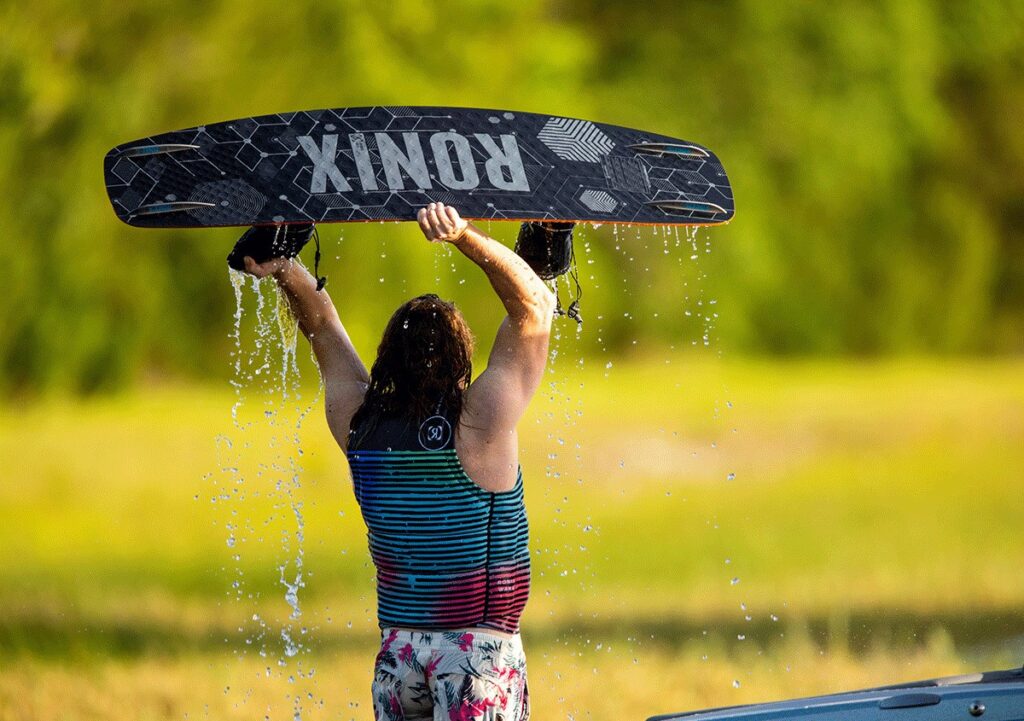
This image is property of blog.gritroutdoors.com.
Choosing Fins Based on Riding Style
Freeride
If you enjoy a mix of cruising, carving, and occasional tricks, a versatile fin setup with a balanced performance profile is ideal for freeride wakeboarding. Choose fins that offer a good balance between stability and maneuverability, allowing you to have control when carving, while still providing enough freedom for tricks and jumps.
Freestyle
For riders who love executing tricks, flips, and spins, a fin setup that prioritizes maneuverability and quick release is essential. Twin fin setups or smaller thruster fin setups are popular choices for freestyle wakeboarding, as they provide the loose feel and freedom needed for executing aerial tricks with ease.
Wake Park
Wake park riding involves navigating through obstacles and performing unique tricks. To maximize performance in a wake park, opt for fins that offer good release, allowing you to slide effortlessly across obstacles. A fin setup with smaller, removable fins is ideal, as it allows for customization based on the specific park features and desired riding style.
Cable Park
Cable park riding also involves navigating obstacles, but with the additional challenge of being towed by a cable system. Cable parks often have different features and conditions compared to wake parks. Fins that offer excellent release and slide capabilities are important for cable park riding. Consider using fins with a flatter profile and rounded edges to enhance your ability to navigate and perform tricks on cable systems.
Boat
Boat wakeboarding typically involves longer rides, higher speeds, and stronger wakes. Fins that provide stability, control, and excellent tracking are vital for boat wakeboarding. Larger fins or thruster setups with a larger center fin can enhance stability and control, allowing riders to carve with precision and take advantage of the boat’s wake for aerial maneuvers.
Installation and Compatibility
Fin Box Types
Wakeboards have different types of fin boxes, each requiring specific fins for compatibility. The most common types of fin boxes are the standard single screw hole, FCS (Fin Control System), and Futures. Ensure that the fins you choose are compatible with your wakeboard’s fin box type. Most wakeboards come with interchangeable fin box systems, allowing for versatility in fin choices.
FCS vs. Futures
FCS and Futures are two popular fin systems used in wakeboarding. FCS fins typically have a single tab that inserts into the fin box. Futures fins, on the other hand, feature a two-tab system that provides increased stability and versatility. When selecting fins, ensure they are compatible with your wakeboard’s fin system, whether it be FCS or Futures.
Fin Configuration
Wakeboard fins can be mounted in various configurations, depending on your riding style and preferences. Some common configurations include center fins only, twin fins, thruster fins, or quad fins. Consider experimenting with different configurations to find the setup that best suits your riding style and desired performance.
Fin Placement
The placement of wakeboard fins plays a significant role in the board’s performance. Fins placed closer to the center of the wakeboard provide stability and control, making them suitable for carving and straight-line riding. Fins placed towards the edges of the wakeboard offer increased maneuverability and a looser feel, ideal for executing tricks and spins. Adjusting fin placement can help fine-tune your wakeboard’s performance to match your preferences.
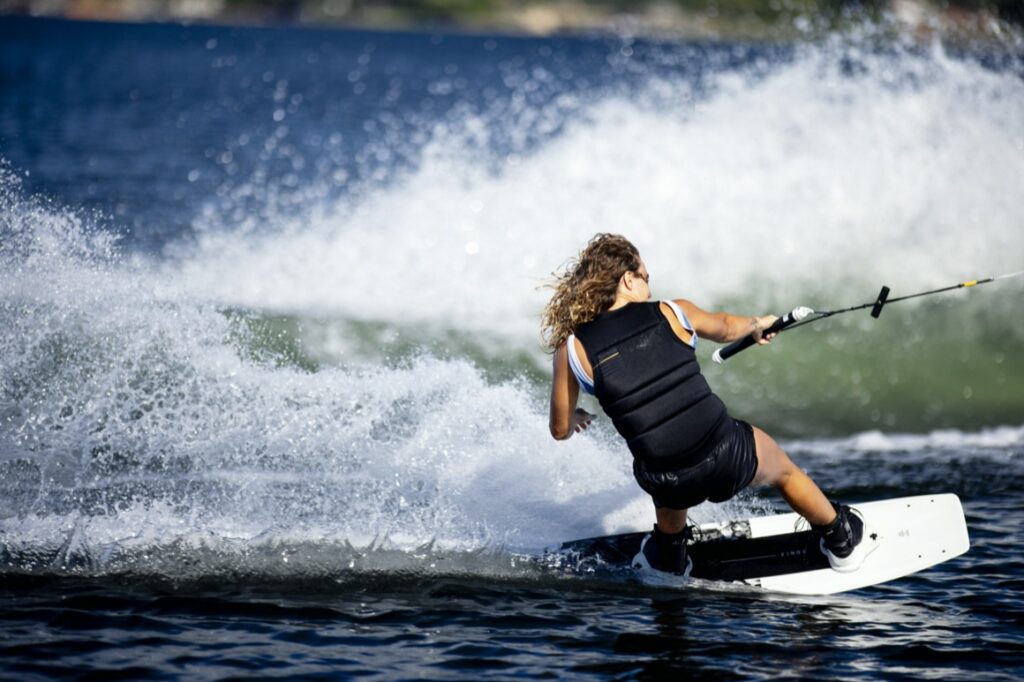
This image is property of blog.gritroutdoors.com.
Testing and Trying Different Fins
Renting or Borrowing Fins
If you’re unsure which fins are the best fit for your riding style or if you’re still exploring different options, renting or borrowing fins can be a cost-effective way to test them out. Many wakeboard shops and rental facilities offer the option to rent or borrow fins for a trial period. This allows you to experience different types of fins firsthand before making a purchase.
Demo Days
Wakeboard manufacturers and retailers often organize demo days where you can test out their latest wakeboard models and fin setups. These demo days provide a valuable opportunity to try out different fins and receive expert advice from experienced riders and company representatives. Take advantage of these events to gain valuable insights and make informed decisions about your fin selection.
Online Reviews and Recommendations
Online reviews and recommendations from fellow wakeboarders can be a valuable source of information when researching and selecting wakeboard fins. Read reviews on reputable wakeboarding websites, forums, and social media platforms to gain insights into other riders’ experiences with specific fin setups. Pay attention to the reviews from riders with similar riding styles and skill levels to get a more accurate perspective.
Personal Trial and Error
Ultimately, the best way to determine the right wakeboard fins for you is through personal trial and error. Once you have gathered information and considered factors such as riding style, skill level, and water conditions, it’s time to test various fin setups to see which ones feel the most comfortable and suit your needs. Start with small adjustments and gradually experiment with different configurations until you find the ideal set of fins that enhances your wakeboarding experience.
Fin Maintenance and Replacement
Cleaning and Drying
Proper maintenance of wakeboard fins is essential to ensure their longevity and optimal performance. After each use, rinse your fins with fresh water to remove any salt or debris. Gently scrub them with a soft brush or sponge to remove any stubborn dirt. Allow the fins to thoroughly dry before storing them to prevent mold or corrosion.
Fin Repair
In the event that your wakeboard fins become damaged or cracked, it is possible to repair them. Small cracks or chips can often be repaired using an epoxy adhesive specifically designed for repairing wakeboard fins. Follow the manufacturer’s instructions carefully and allow sufficient drying time before using the fins again. However, if the damage is extensive or compromises the fin’s structural integrity, it may be necessary to replace the fins entirely.
Replacing Fins
Over time, wakeboard fins may wear down or become damaged beyond repair. When replacing fins, ensure that the new fins are compatible with your wakeboard’s fin box type and system. Consider whether you want to stick with the same fin configuration or experiment with different setups. Replacement fins should be selected based on your riding style, skill level, and personal preference.
By understanding wakeboard fins, considering various factors, and experimenting with different setups, you can find the perfect fins to enhance your wakeboarding experience. Remember to prioritize safety, take into account your skill level, and consult with experts or experienced riders for guidance. With the right fins, you’ll be able to navigate the water with confidence and enjoy the thrill of wakeboarding to the fullest.
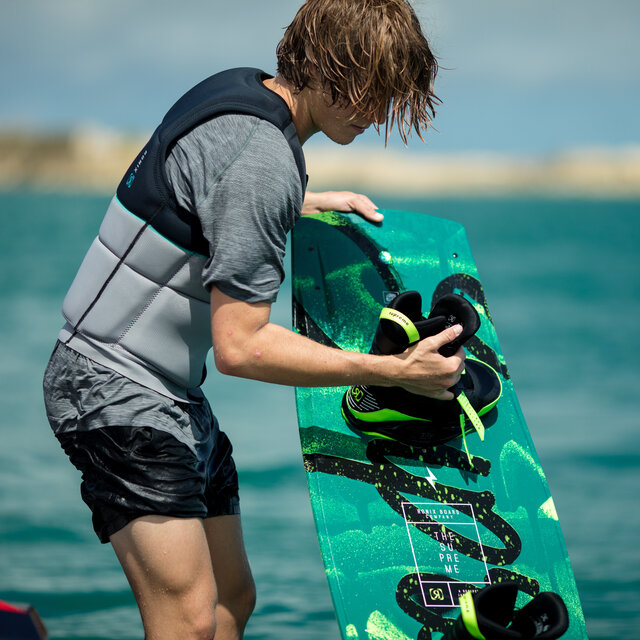
This image is property of arg-images.sunandski.com.






